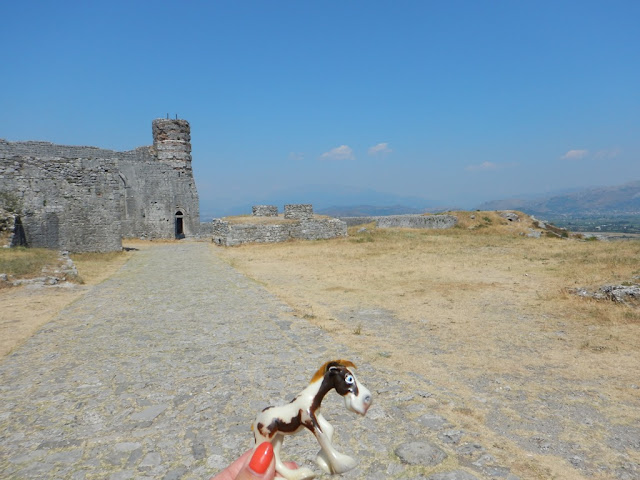Last week we have seen on the Market Square in Toruń the monument of Mikołaj Kopernik. Kopernik was the astronomer who demonstrated that, contrary to what people believed for ages, it is the Earth who turns around the Sun, not the other way round. He was born in Toruń. To be more precise - here.
As we enter, we can see the portrait of Kopernik. This haircut was quite interesting.
Kopernik was born on 19 February 1473.
He completed his university studies in Bologna. This document confirms his enrolement.
And since Kopernik was a diligent student, on 31 May 1503 he obtained a Ph.D. from the university of Ferrara. But this was not a Ph.D. in astronomy but one in canon law.
But it is of course for his astronomical work that he is best known. Ladies and gentleman, bend your head in front of the manuscript of De revolutionibus orbium coelestium (On the Revolutions of the Heavenly Spheres).
In Toruń you can also admire the first edition of this book, printed in 1542 in Nurnberg. The church was immediately offended by the idea that Earth might be turning around the Sun. After all, Earth and humans are the most important of God's creations. In 1616 it was inscribed on the Index of Prohibited Books.
But the imagination of the scientists was already spinning like the solar system.
As we enter, we can see the portrait of Kopernik. This haircut was quite interesting.
Kopernik was born on 19 February 1473.
He completed his university studies in Bologna. This document confirms his enrolement.
And since Kopernik was a diligent student, on 31 May 1503 he obtained a Ph.D. from the university of Ferrara. But this was not a Ph.D. in astronomy but one in canon law.
But it is of course for his astronomical work that he is best known. Ladies and gentleman, bend your head in front of the manuscript of De revolutionibus orbium coelestium (On the Revolutions of the Heavenly Spheres).
In Toruń you can also admire the first edition of this book, printed in 1542 in Nurnberg. The church was immediately offended by the idea that Earth might be turning around the Sun. After all, Earth and humans are the most important of God's creations. In 1616 it was inscribed on the Index of Prohibited Books.
But the imagination of the scientists was already spinning like the solar system.
Because Kopernik was obviously neither the first nor the last one to raise his eyes to the planets and stars surrounding Earth. Tycho Brache, Galileo Galilei, Johannes Kepler and Isaac Newton are just a few of them to be commemorated in Kopernik's birth house.
One can wonder how Kopernik managed to discover all he did without all the fancy instruments that astronomers have available today. Well, he did have some tools, though none of them had megabytes of memory or Internet connection. This one is called astrolabe or armillary sphere. It was used to determine the ecliptic length and width of planets, and too measure the local time.
This one is a triquetrum. It is a parallactic instrument, used to determine the parallax of the Moon, or otherwise the angle at which the radius of the Earth ca be seen from the Moon. It was necessary to measure the distance from the Earth to the Moon and he zodiacal stars.
This piece of wood is a quadrant, used to observe the apparent way of the Sun around the celestial sphere.
Obviously, even of Kopernik would probably treat his home as his second office, this was still home. So when walking by you can see what kind of furniture people used to have in late sixteenth century ...
... or what they kitchens looked like. Though personally I doubt that Kopernik was ever here, this was the domain of servants.
But the most delightful surprise in the building was this room.
It is a reconstruction of the exhibition devoted to Kopernik in the Polish museum in Rapperswil, which we visited some years ago.
If you really want to celebrate the life work of Mikołaj Kopernik, I invite you to the Toruń planetarium. Stars are always closer than you think!





























































